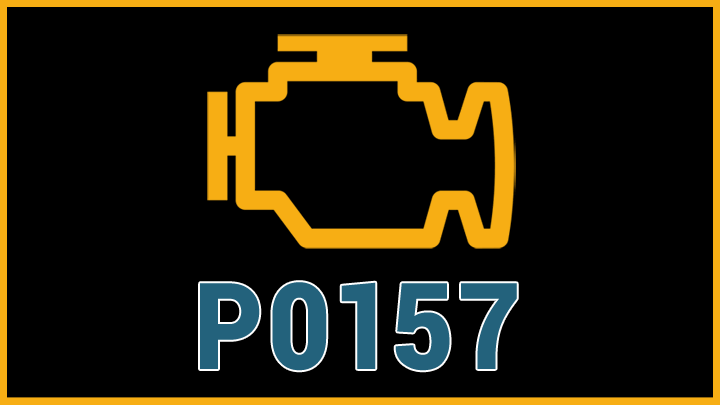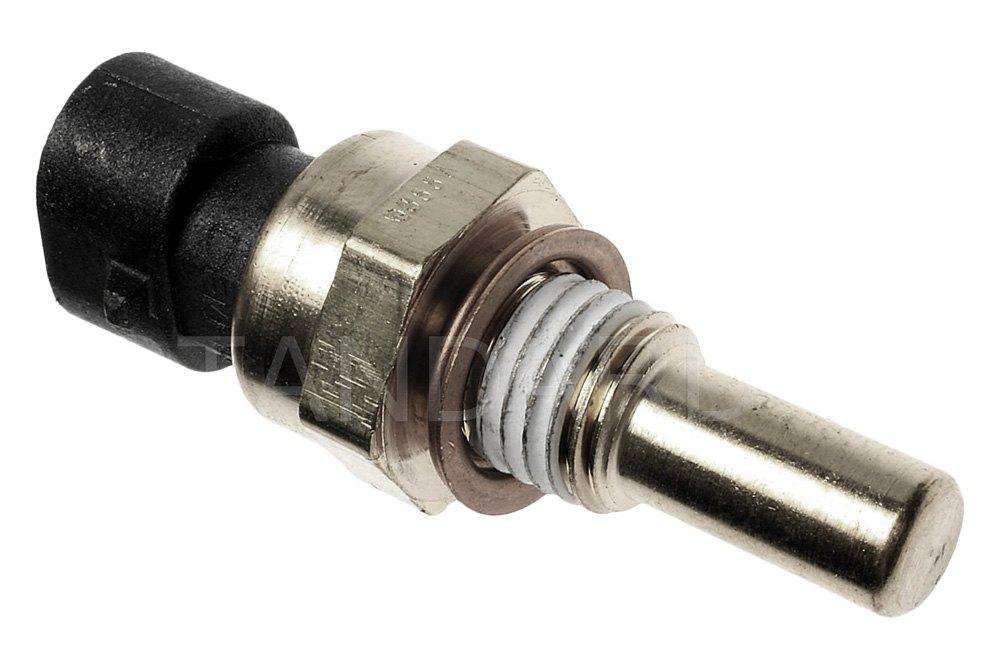
P0158 O2 Sensor Circuit High Voltage (Sensor 2, Bank XNUMX)
Content
P0158 – OBD-II Trouble Code Technical Description
Trouble code P0158 indicates a high voltage in the oxygen sensor (sensor 2, bank 2) circuit.
What does the fault code mean P0158?
Trouble code P0158 indicates a problem with the Oxygen Sensor in Bank 2 and Sensor 2 after the catalytic converter. This code indicates “Oxygen Sensor 2 Bank 2 Circuit Low Voltage.” It indicates that the voltage coming from oxygen sensor 2 in bank two is below the expected range, which may indicate various problems such as insufficient oxygen in the exhaust gas or a faulty sensor.

Possible reasons
The following are possible reasons for this DTC:
- Oxygen Sensor malfunction: The most common option. The oxygen sensor can fail due to aging, contamination, mechanical damage or corrosion.
- Damaged or broken wiring: Wiring problems can cause the signal from the oxygen sensor to the engine control module (ECM) to not be transmitted correctly.
- Faulty catalyst: Damaged or malfunctioning catalytic converter may cause P0157.
- Leak in the exhaust system: A leak in the exhaust system in front of the oxygen sensor may confuse it, resulting in an error.
- Problems with the engine control module (ECM): A malfunctioning ECM may cause the signal from the oxygen sensor to be misinterpreted.
- Problems with the fuel injection system: Improper operation of the fuel injection system may result in improper mixing of fuel and air, which may affect the performance of the oxygen sensor.
- Problems with the intake system: For example, an intake manifold leak or a problem with the mass air flow sensor (MAF sensor) can affect the performance of the oxygen sensor.
To accurately determine the cause, it is necessary to conduct a detailed diagnosis using specialized equipment.
What are the symptoms of a fault code? P0158?
Symptoms for a P0158 trouble code may vary depending on the specific conditions and characteristics of the vehicle, some of the possible symptoms are:
- Increased fuel consumption: If the oxygen sensor is faulty and does not send correct data to the engine control module (ECM), it can result in an incorrect fuel/air mixture, which in turn can increase fuel consumption.
- Loss of power: Improper operation of the fuel injection system or adjustment of the fuel/air mixture may result in loss of engine power.
- Unstable idle: A faulty oxygen sensor can cause erratic idle or even possible skipping.
- Unusual emissions of harmful substances: Improper operation of the oxygen sensor can result in increased emissions of harmful substances such as nitrogen oxides (NOx) and hydrocarbons, which may be noticed during inspection or as an unusual exhaust odor.
- The car may enter limp mode: In some cases, especially if the oxygen sensor reports a critical lack of oxygen, the vehicle may go into limp mode to prevent engine damage.
- Recording error codes: The Engine Control Module (ECM) may record additional error codes related to improper operation of the fuel injection system or catalytic converter.
If you suspect a P0158 trouble code, it is recommended that you take it to a professional auto mechanic for diagnosis and repair to prevent further problems with your vehicle.
How to diagnose a fault code P0158?
The following steps are recommended to diagnose DTC P0158:
- Checking the error code: First, connect the OBD-II scanner to your vehicle's diagnostic port and read the P0158 error code. Record it for later analysis.
- Checking wiring and connectors: Check the wiring and connectors connecting the oxygen sensor to the engine control module (ECM). Make sure the wiring is intact, the connectors are securely connected and there are no signs of corrosion or damage.
- Checking the oxygen sensor voltage: Using a multimeter, measure the voltage at the oxygen sensor output. The voltage should vary between 0,1 and 0,9 volts depending on the composition of the exhaust gases.
- Check the catalyst: Assess the condition of the catalyst, as damage to it can cause the P0158 code. Replace the catalyst if necessary.
- Oxygen sensor test: If all other systems are operating normally, the oxygen sensor may be faulty and require replacement.
- Additional tests: Additional tests, such as checking the fuel injection system or intake system, may need to be performed to rule out other potential causes.
- Clearing the error code: After diagnosing and fixing the problem, reset the error code using an OBD-II scanner.
If you are unsure of your vehicle diagnostic and repair skills, it is recommended that you contact a qualified auto mechanic or service center for professional assistance.
Diagnostic errors
When diagnosing DTC P0157, the following errors may occur:
- Insufficient diagnosis: Failure to complete all required diagnostic steps may result in incomplete or inaccurate results.
- Incorrect cause identification: Failure to correctly identify the source of the problem may result in the replacement of unnecessary components or incorrect repairs.
- Skipping diagnostic steps: Skipping certain diagnostic steps, such as checking wiring, connectors, or additional systems, may result in important factors being missed.
- Wrong fix: Fixing the identified problem incorrectly may not resolve the root of the problem, causing the error code to reappear after cleaning.
- Use of low-quality components: Replacing poor quality components or non-original parts may lead to further problems.
- Failure to follow manufacturer's recommendations: Some manufacturers may have specific recommendations or diagnostic and repair procedures that must be followed.
To avoid mistakes when diagnosing trouble code P0157, it is important to carefully follow the manufacturer's recommendations, carry out all necessary diagnostic steps and, if necessary, contact qualified technicians or service centers.
How serious is the fault code? P0158?
Trouble code P0158 indicates a problem with the Oxygen Sensor of Bank 2, Sensor 2 after the catalytic converter. This error code indicates low voltage in the oxygen sensor 2 circuit, which can indicate various problems such as insufficient oxygen in the exhaust gases or a malfunction of the sensor itself.
Although not a critical problem, a faulty oxygen sensor can result in poor engine performance, increased emissions, and increased fuel consumption. Moreover, improper mixing of fuel and air can lead to problems with environmental certification when passing inspection.
Although the problem is not an emergency, it is recommended that you have a professional or auto mechanic diagnose and fix the problem to avoid further problems and keep your vehicle performing optimally and environmentally friendly.
What repair will help eliminate the code? P0158?
Troubleshooting DTC P0158 may include the following:
- Replacing the oxygen sensor: If the oxygen sensor is faulty or does not work properly, it should be replaced with a new original or high-quality analogue.
- Checking and repairing wiring: Check the wiring and connectors connecting the oxygen sensor to the engine control module (ECM). If necessary, repair or replace damaged wires or connectors.
- Check the catalyst: Assess the condition of the catalyst, as damage to it can cause the P0158 code. Replace the catalyst if necessary.
- Checking and repairing other exhaust system components: Check the condition and operation of other exhaust system components such as the exhaust manifold or muffler. If necessary, repair or replace parts.
- Clearing the error code: After completing the repair work and eliminating the causes of the P0158 error code, reset the error code using an OBD-II scanner.
It is recommended that you contact a qualified auto mechanic or service center for diagnosis and repair, especially if you do not have experience working with vehicle exhaust systems or if you are not confident in your repair skills.
P0158 – Brand-specific information
List of some car brands with interpretations of the P0158 fault code:
- Toyota / Lexus / Scion: Low voltage of oxygen sensor 2 bank 2.
- Honda/Acura: Oxygen sensor (HO2S) voltage low (Bank 2 Sensor 2).
- Ford: Oxygen sensor 2 bank 2 voltage low.
- Chevrolet / GMC: Bank 2 oxygen sensor voltage low, sensor 2.
- BMW/Mini: Low voltage of oxygen sensor 2 bank 2.
- Volkswagen/Audi: Low voltage of oxygen sensor 2 bank 2.
- Mercedes-Benz: Low voltage of oxygen sensor 2 bank 2.
- Hyundai/Kia: Low voltage of the oxygen sensor (Bank 2 Sensor 2).
- Nissan/Infiniti: Low voltage of oxygen sensor 2 bank 2.
- Subaru: Low voltage of oxygen sensor 2 bank 2.
This is general information and specifications may vary slightly depending on the model and year of the vehicle. For more accurate information, it is recommended to consult the repair and service manual for your specific make and model of vehicle.

